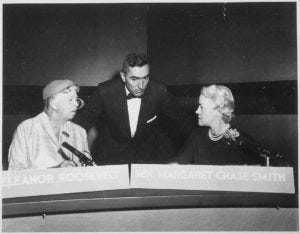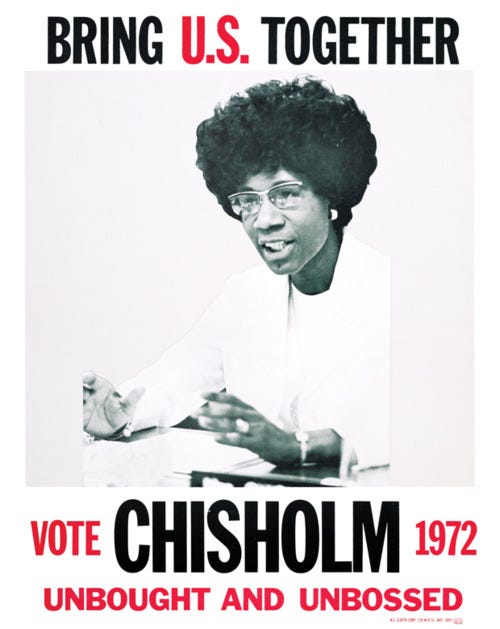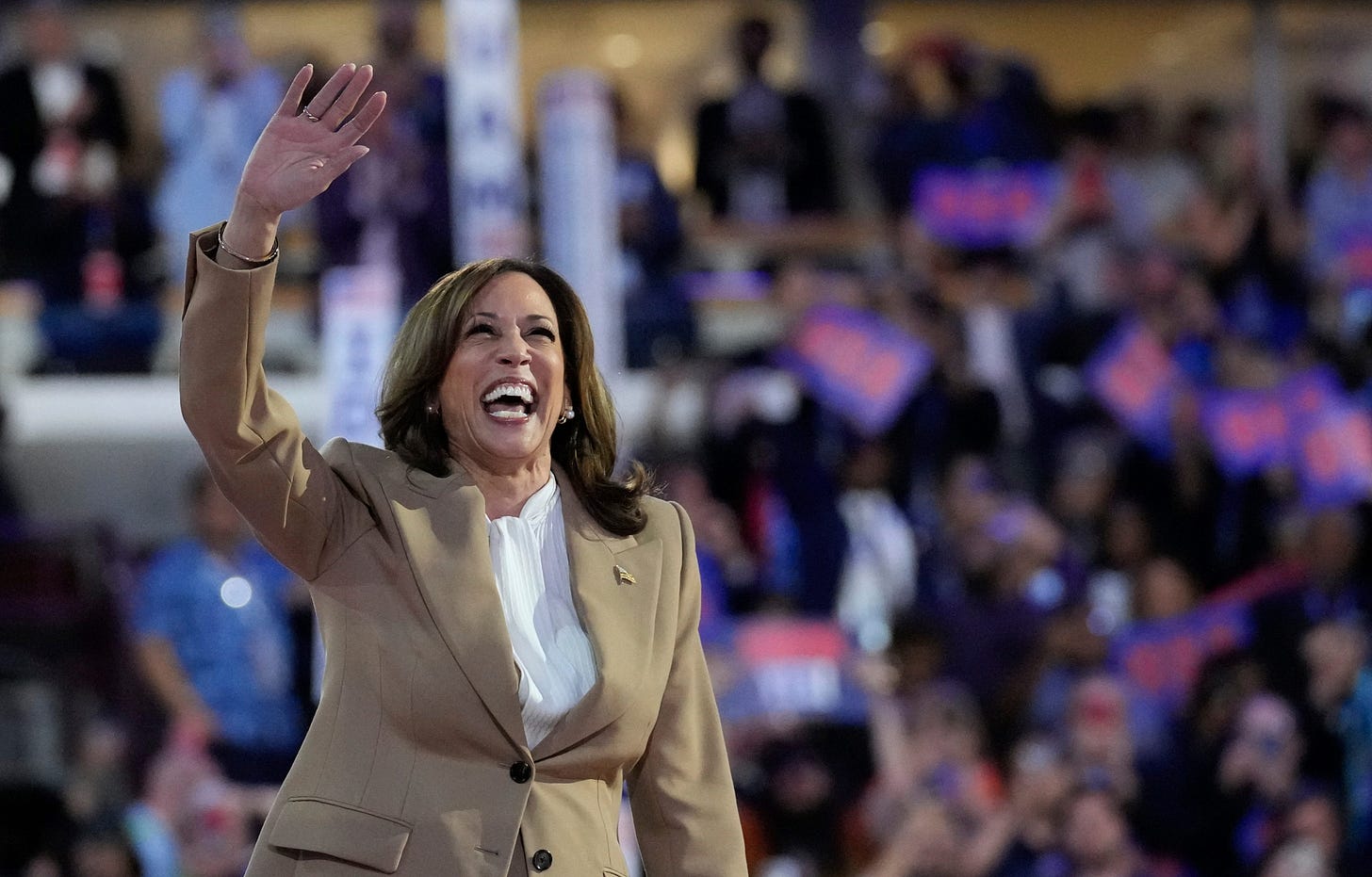Cracks in the Glass Ceiling
152 years of historic firsts for women in the race for president and vice president

I’ve been thinking lately about the ways in which the 2024 presidential election is going to make history, one way or another. Most obviously, Kamala Harris is striving to become the nation’s first female president, while Donald Trump is attempting to become only the second person to win non-consecutive terms in the White House.
Then, less discussed but still intriguing, there’s the fact that Trump is one of only a handful of people who have ever run for president in three different elections. How does his candidacy stack up historically against some of those other three-time nominees?
So I thought it might be interesting to take a look at some of this history, and at other candidates who’ve previously attempted what Harris and Trump are trying to achieve this year.
Let’s start with the women.
Harris this year is trying to do what eluded Hillary Clinton in 2016. But while they’re the first two women to have a legitimate chance to be elected president, they’re not the first ones to run for the office. Here are some females who put earlier cracks in that glass ceiling.
1. Daring presidential bids in the 19th century
Women didn’t have the right to vote in every state until passage of the 19th Amendment prior to the 1920 election. But that didn’t stop some women from making history with daring presidential bids in the late 1800s.
Victoria Woodhull in 1872: The first woman to run for president

The first woman to ever run for President of the United States did so in 1872. That year, the Equal Rights Party nominated Victoria Woodhull as its presidential candidate.
Woodhull was a 34-year-old activist for women’s rights, as well as the country’s first female stockbroker, a newspaper publisher, and the first woman to testify before a Congressional committee. She ran on a platform of women’s voting rights, racial equality, a graduated tax system, civil service reform, and the formation of a congress of nations to settle international differences.
No one, unfortunately, kept any records of whether Woodhull received any popular votes. Not to mention that she spent Election Day in prison because her newspaper had published a controversial article about adulterous affairs committed by the preacher Henry Ward Beecher. Nonetheless, she made her mark on history as the first woman with the audacity to mount a presidential campaign.
Belva Ann Lockwood in 1884: The first woman to receive official votes
Woodhull may have been the first woman to run for president, but Belva Ann Lockwood was the first one to receive official votes (that were counted, at least).
Lockwood, who was a candidate of the National Equal Rights Party, was a lawyer who had forged a career in the male-dominated legal field. In 1880, she even became the first woman to argue a case before the Supreme Court.
In the 1884 election won by Democrat Grover Cleveland, Lockwood received about 4,100 votes in nine states, though it was reported that additional votes were discarded. She ran again for president in 1888.
2. The first real cracks in the glass ceiling between 1964 and 1984
After Woodhull and Lockwood, there were women who served in Congress and in cabinet positions but not much happened for some time in terms of presidential elections. But between 1964 and 1984 a few more women entered the presidential arena and put the first real cracks in that glass ceiling.
Margaret Chase Smith in 1964: The first woman to run for a major party nomination

In 1964, Republican Margaret Chase Smith, a Senator from Maine, became the first woman to run for the nomination of a major party.
Smith was the first woman to serve in both the House and Senate during 32 years in Congress. She didn’t win any primaries in 1964, but received 227,000 votes and placed fifth in the balloting, with 27 delegates, at that year’s GOP convention, where Arizona Senator Barry Goldwater became the Republican nominee.
Shirley Chisholm in 1972: The first Black female candidate

Shirley Chisholm in 1972 became the first female to mount a campaign for the Democratic nomination, and was also the first Black to run for president.
A Brooklyn native, Chisholm served in Washington for 14 years and was the first Black woman elected to Congress. She was a founding member of the Congressional Black Caucus and the National Women's Political Caucus.
In the 1972 presidential campaign, she received 430,000 votes and had 152 delegates at the Democratic convention, won by South Dakota Senator George McGovern.
Geraldine Ferraro in 1984: The first female vice presidential candidate of a major party

Although New York Representative Geraldine Ferraro didn’t mount her own presidential campaign, she made history in 1984 when Democratic nominee Walter Mondale chose her as his running mate. Ferraro thus made history as the first female vice-presidential candidate on a major party ticket.
The announcement of Ferraro’s candidacy electrified women across the country. She attracted enthusiastic crowds during the fall campaign, but it wasn’t nearly enough to overcome an improving economy and the popularity of the incumbent Republican President Ronald Reagan, who won a landslide victory in the general election.
3. Historic firsts from third-party candidates
After 1984, interestingly, some of the history made by female candidates came from third-party campaigns rather than from the major parties.
Lenora Fulani in 1988: The first woman presidential candidate on the ballot in all 50 states
Despite not being the candidate of a major party, Lenora Fulani made history in 1988 when she was the first woman to appear on the ballot as a presidential candidate in all 50 states (obviously Ferraro appeared on all state ballots as a vice presidential candidate). A psychologist and community activist, Fulani ran as a candidate of the New Alliance Party with a focus on racial equality and political reform. Fulani received 217,000 votes, which at the time was the most ever for a female candidate.
Jill Stein in 2012: The most votes for a female candidate before 2016
In 2012, Jill Stein set the pre-2016 record for most votes by a woman presidential candidate in a national election with 468,000. A physician turned political activist, Stein ran as the candidate of the Green Party, which promotes environmentalism, social justice, and grassroots democracy.
Stein ran again in 2016 and crushed her own record, with 1.4 million votes, though she was dwarfed that year by Hillary Clinton’s performance. In fact, her greatest claim to fame in 2016 may have been as a spoiler in the Clinton-Trump battle. She didn’t run in 2020, but is back again as the Green Party candidate in the 2024 election.
4. From 2008 to 2024, women emerge as legitimate national candidates
The past 16 years have seen the greatest advancements by women on the national political scene. The first two women to win major party presidential nominations, the first female vice president, and the regular presence of women as contenders for national office.
2008: Sarah Palin and Hillary Clinton come closer to making history
In 2008, for the first time since 1984 a woman was nominated for vice president. This time, it was on the Republican side when John McCain selected Alaska Governor Sarah Palin as his running mate. While it didn’t end well, it’s easy to forget that Palin was initially a sensation as a candidate, particularly in the wake of her speech at that year’s GOP convention.
That same year, New York Senator (and former First Lady) Hillary Clinton came within a whisker of becoming the first female to win the nomination of a major party. She lost a close Democratic nomination battle to Illinois Senator Barack Obama, who went on to win two terms as president.
2016: Clinton becomes the first female nominee of a major party

Clinton finally made that history in 2016 when she became the first female presidential nominee of a major party. She was thus the first woman in the then 240-year history of the United States to have a legitimate chance to be elected president.
Clinton won the popular vote in the 2016 election, but lost the Electoral College to Donald Trump. Clinton won 65.8 million votes, which was 2.9 million more than Trump, but was defeated in the electoral vote by about 78,000 combined votes in Michigan, Wisconsin, and Pennsylvania.
2020: Kamala Harris is the first woman to be elected vice president
California Senator Kamala Harris in 2020 succeeded where Ferraro and Palin had not. That year, Harris became the first female in the country’s history to be elected vice president.
Harris ran in that year’s Democratic presidential primary along with several other women, notably Senators Amy Klobuchar of Minnesota and Elizabeth Warren of Massachusetts, who were both among the top five contenders for the Democratic nomination. The nomination was won by Joe Biden of Delaware, former vice president and senator. Biden then selected Harris as his running mate and their ticket went on to win the 2020 election over Trump.
2024: Harris is nominated as the second female presidential candidate of a major party

In 2024, when President Biden chose not to continue his bid for re-election, Harris became the new Democratic nominee. Now it is Harris who is striving to be elected as the nation’s first female chief executive.
It’s a toss-up battle at the moment. If Harris wins, she’ll also be the second Black and the first South Asian in the presidency, owing to her biracial heritage as the daughter of Indian and Jamaican immigrants. But most importantly, the 47th president would be the first female to occupy the Oval Office, 152 years after Victoria Woodhull’s audacious candidacy.



